“Not all greens grow gracefully—and mine certainly didn’t at first. My early foliage plants wilted, yellowed, and struggled in pots. But through trial and error, I learned how to grow healthy, lush foliage plants in containers the right way.”
 My Messy Foliage Journey
My Messy Foliage Journey
When I started growing my first foliage plant—yes, it was a pothos—I thought it would be a walk in the park. But trust me, I managed to turn this so-called “easy-growing” plant into a wilted, mushy mess not once, not twice, but three times. Every time the plant didn’t make it, my gardening ego took a hard hit.
Eventually, I discovered the root cause of my failures: using heavy garden soil in pots. Once I corrected that mistake, the same pothos transformed into a bushy green ivy that now spills beautifully across my garden—even after multiple trims!
Feeling overconfident, I brought home a few more potted foliage plants. Boom! Every single one wilted or turned mushy in its own spectacular way. That’s when I realized it wasn’t just the soil—it was the entire potting mix that needed fixing. So, I switched things up by adding cocopeat and organic matter to improve drainage and aeration.
But hello, next issue—over-fertilizing. I burnt a few plants before learning that foliage doesn’t need to be fed like flowering plants. Once I figured out a balanced feeding routine, the next challenge hit me: poor drainage. I upgraded from heavy concrete pots to lightweight plastic containers with proper drainage holes, and finally saw some progress.
Just when I thought I had it all figured out, watering became the villain. Some plants wilted from underwatering, while most turned mushy from overwatering. Eventually, I cracked the code on how to water foliage plants properly—by understanding plant signals and seasonal changes.
Then came the twin nightmares: light issues and pest infestations. I won’t lie—it took me a good 4–5 years to truly figure out how not to kill a foliage plant. But now, my container garden proudly hosts a variety of healthy, thriving foliage plants, and more importantly, I carry the real-world experience that no YouTube video or Pinterest tip could teach.
The reason I chose to write about this is simple—foliage plants aren’t high-maintenance or difficult. All they need is the right growing conditions and a little patience. If I can go from killing pothos to growing a lush, leafy haven, you can too.

🌿 The Common Foliage Mistakes I Made
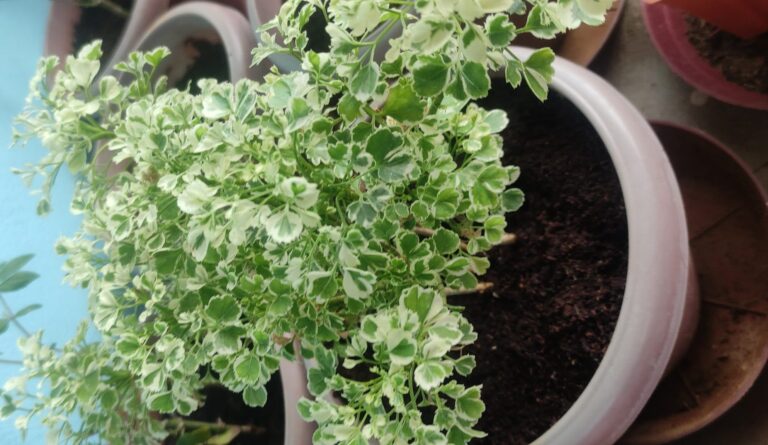
Foliage plants are often considered easy compared to flowering or edible plants, which usually demand specific potting mixes and strict care routines. But here’s the truth—if you have no clue about foliage plant growth patterns, or feel overwhelmed by random online advice, it’s easy to miss the basics. Especially in container gardening, overlooking a simple checklist can quickly turn leafy dreams into mushy messes.
 Wrong Pot Sizes and Overcrowding
Wrong Pot Sizes and Overcrowding
Wrong pot sizes are a silent killer. Sometimes unnoticed, they directly affect a plant’s root development and long-term survival. A small pot restricts root growth, while an oversized pot retains too much moisture and nutrients—making the plant vulnerable to overwatering and root rot.
“Confused about which pots to pick? Discover how the right container size, shape, and material can make your plants thrive. Read my full container gardening tips here!“

- For shallow roots, use wider but shallower pots.
- For deep roots, choose deeper pots.
Also, avoid upsizing too fast. Wait until you see roots peeking out of the drainage holes—repot only when needed. Big isn’t always better in pots!
Now, let’s talk about overcrowding. Fancy displays with tightly packed plants may look good on social media, but they restrict airflow, block sunlight, and make regular watering harder.
Why overcrowding backfires:
- Poor ventilation
- Leaf wilting
- Sunlight gets blocked
- Watering gets skipped
- Pests and diseases spread faster in hidden spots
Healthy tip: Arrange pots based on their growth habit, keeping a proper distance to let your plants breathe and thrive.
👉 Want to know which pots actually make a difference? Read my guide on the 6 best pots for container gardening and discover tried-and-tested tips.
 Using Generic Soil Without Checking Drainage or Aeration
Using Generic Soil Without Checking Drainage or Aeration
In my early gardening days, I thought more soil = more growth. So I dumped plain garden soil into pots without understanding soil structure or even sterilization.
Big mistake.
Heavy soils hold too much water, causing poor drainage and low aeration. Without air, roots can’t breathe—and with soggy soil, diseases come knocking fast. Worse, unsterilized soil might carry pathogens, which leads to soil-borne diseases.
If you’re using garden soil in pots, mix it with cocopeat, compost, or perlite to improve aeration and drainage. Well-draining soil is a must for all container foliage plants.
“Struggling with soil that just won’t work? Learn the exact potting mix tips I’ve mastered over 7 years of container gardening to grow healthy, thriving plants. Read now!“
 Placing Sun-Sensitive Foliage in Direct Sunlight
Placing Sun-Sensitive Foliage in Direct Sunlight
Unlike flowering or fruiting plants, foliage plants need much less sunlight. They don’t need energy to bloom or bear fruits—just enough for healthy leaf production. But this often gets misunderstood.
The need for photosynthesis in foliage is low to moderate. Plants with darker leaves absorb more light, while light-colored or delicate-leaf varieties burn quickly in full sun.

- Place sun-sensitive foliage in bright indirect light
- Place sun-loving foliage plants (like succulents) where they get direct sunlight
- Don’t let small-leaved, soft foliage sit in harsh sunlight—they’ll scorch quickly
“Not sure where to place your pots? Master sunlight, space, and drainage tips to help your container garden thrive—straight from real experience. Read here!“
 Overwatering Without Understanding Plant Needs
Overwatering Without Understanding Plant Needs
Overwatering is the #1 reason I lost most of my foliage plants. Unlike heavy drinkers like vegetables, foliage plants need less water, especially in pots.
Why?
Because they have shallow roots that suffocate easily in soggy soil. Their water uptake is slow, and many foliage types even store water in their leaves. So too much water equals disaster.
What overwatering causes:
- Root rot
- Fungal growth
- Leaf drop
- Mushy stems
Use well-draining potting mix, and only water when the top 1–2 inches of soil feels dry. Learn your plant’s signs before reaching for the watering can.
 Ignoring Humidity and Airflow
Ignoring Humidity and Airflow
I used to mist my tropical foliage with love… and hard water. Turns out, I was setting them up for failure.
Tropical foliage plants love 70–80% humidity, but random misting (especially with dust or hard water) blocks leaf stomata—those tiny pores that help with gas exchange. Blocked stomata = poor photosynthesis = stressed plants.

- Reduces fungal diseases
- Keeps leaves from wilting
- Prevents pest infestations
- Makes plants more visible (for early signs!)
- Allows each plant to grow in its natural shape
Instead of clustering pots for looks, I now space them well and focus on air circulation. Trust me—it’s a game-changer.
 Buying Without Research: Choosing “Pretty” Over Practical
Buying Without Research: Choosing “Pretty” Over Practical
This one hurt the most. I bought plants based on how pretty or trendy they looked—without checking if they could survive my local climate or care routine.
Some plants couldn’t tolerate my area’s heat. Others needed constant misting, indirect light, or attention I couldn’t give consistently.
Now, I follow a simple checklist before buying any new foliage plant:





Stick to easy-care foliage plants if you’re starting out or have a busy schedule. Beauty is only sustainable when the plant stays alive!
Foliage plants may be labeled “easy,” but as you can see, it took me real mistakes to truly understand their needs. With the right potting mix, proper watering, correct lighting, and a little patience, even a beginner can turn things around.
“Avoid the errors most new gardeners make! Learn from my 8 biggest beginner gardening mistakes so you can skip the regret and grow with confidence. Read here!“


🛠️ What I Did to Turn It Around
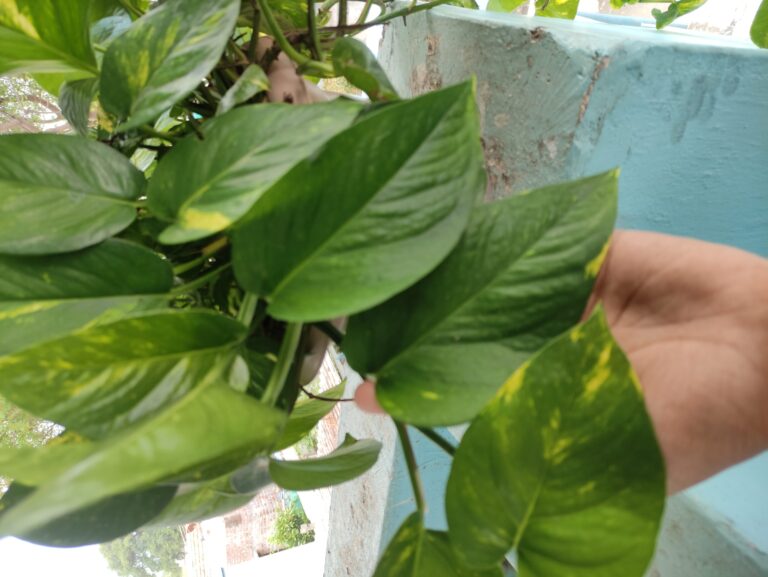
For me, the turning point in my foliage journey came when I finally understood foliage plants’ specific needs. What works for ground beds, flowering plants, or vegetables does not always work for container-grown foliage plants. Here’s exactly what I did that transformed my foliage disasters into a lush and blissful success.
Learning Plant Needs
Don’t hesitate to read about a plant before buying it. It takes less than 15 minutes to research, and that time can save you a plant, your gardening confidence, and the money you invest in your garden.
The first thing I learned? Foliage plants have unique light requirements. Match the plant to the right spot in your home or garden. Knowing whether your plant prefers bright indirect light, partial shade, or filtered sunlight is key. With container gardening, you also get mobility, so you can adjust pots seasonally as the light shifts.
I also started understanding growth habits. For example, a vining or trailing plant kept in a plain pot without a trellis will just sprawl and look messy. Likewise, choosing the right pot and placing plants based on how they grow makes a big difference.
Finally, I matched my watering habits to the plant’s needs. Some foliage plants need frequent watering, others prefer drier soil. If you’re a busy gardener, choose low-maintenance foliage plants that can handle less frequent care.
Creating a Custom Potting Mix for Foliage
This is my favorite part—and one of my biggest lessons. Early on, I killed several foliage plants by planting them in heavy compact soil. Most foliage plants hold water in their leaves and have shallow roots, so they thrive in well-draining, aerated, lightweight soil.
I now create a soilless potting mix instead of using garden soil, which can be heavy and full of pathogens.
“Your plants deserve better than random soil! Discover my 7 years of tried-and-tested potting mix tips to grow strong, healthy container plants. Read now!“
Here’s what I use:
- Cocopeat as a base: sponge-like, retains moisture without waterlogging
- Aeration materials: perlite, vermiculite for air pockets and root health
- Organic matter: compost and manure for slow-release nutrients
- Neem cake to reduce soil-borne diseases
- A little coarse sand or rice hulls to help with drainage
- For chunkier texture, add orchid bark or coconut husks
A good starting ratio:
50% cocopeat + 20% aeration materials + 20% organic matter + 10% coarse drainage material.
You can tweak this based on your local climate and plant feedback.
This mix keeps the soil light, breathable, and nourishing—exactly what container foliage plants need.
Repotting Mistakes: When and How to Do It Right
In my early days, I thought a bigger pot meant better growth. Wrong! Oversized pots lead to soggy soil, overwatering, and root rot.
Best practice:
- Always size up gradually: a pot that’s 2 inches bigger than the root ball is perfect.
- Repot only in active growing seasons (spring or early summer), not in dormancy or peak summer heat.
- Watch for signs of repotting need:
- Roots coming out of drainage holes
- Soil drying out too fast
- Water running straight through
- Stunted growth
Always loosen the root ball before moving the plant and ensure pots have good drainage holes.
Observing Leaf Signals
Plants speak to us through their leaves. Once I learned to read them, everything changed.
- Yellowing: Lower leaves = overwatering. Uniform yellowing = nitrogen deficiency. New leaves yellow with green veins = iron deficiency.
- Brown edges/tips: Underwatering or salt build-up. Crispy tips = low humidity.
- Drooping: If leaves perk up after watering = dehydration. Drooping with foul smell = root rot.
- Discoloration: Spots or patches = fungal disease or pests.
- Curling: Downward curl = overwatering. Upward curl = underwatering. Random curling = light stress.
- Pale patches: Sunburn or nutrient issues.
- Stunted growth: Usually root bound, poor soil nutrition, or low light.
These visual cues guide me in adjusting water, nutrients, and plant placement.
Right Positioning of Pots
Placement matters more than décor. Choose the spot before buying the plant.
Key tips:
- Match light needs to plant type. Shade-loving foliage doesn’t survive in full sun, and sun-lovers like succulents won’t thrive in dim corners.
- Ensure ventilation and avoid overcrowding. Air circulation prevents pests and fungal issues.
- Most foliage does well in bright indirect light with occasional movement as the seasons change. Even low-light plants need a bit of natural light once in a while.
“Not sure where to place your pots? Master sunlight, space, and drainage tips to help your container garden thrive—straight from real experience. Read here!“
Embracing Slow Growth and Seasonal Changes
Foliage plants grow slower than fruiting or flowering plants because they focus on root and leaf development, not flowers or fruit. Their photosynthesis efficiency is lower, so they adapt to low-light environments with slower, steady growth.
Once I understood this, I stopped expecting instant results and started appreciating their quiet, resilient pace.
Understanding your plant’s needs—from soil mix and watering to light and repotting—changes everything. These steps helped me turn years of trial and error into a thriving, lush container garden full of healthy foliage plants.

👉 Read my blog on post-monsoon plant care tips for container gardens to help your plants recover and thrive after the rains.
🌿 My Top 5 Foliage Plants That Survived Everything
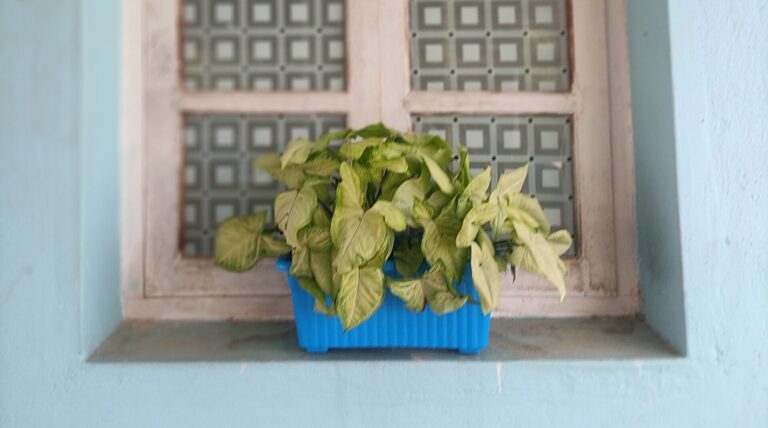
I’ve tried plenty of foliage plants—Philodendron varieties, Cordyline, succulents, Coleus, and many more. Over the years, I’ve had my fair share of thriving plants and sadly wilted ones too, thanks to overwatering, wrong soil mix, light stress, fertilizer burns, and pest attacks.
But none of that ever stopped me from bringing home new plants. Every failure taught me valuable lessons on the do’s and don’ts of growing foliage plants in containers.
And through all this trial and error, I discovered my Top 5 tough-as-nails foliage plants. These five are truly badass survivors—they’ve withstood unpredictable summers, high-humidity rains, pest attacks, and even those times when life kept me too busy to care for them. Let’s decode why these five plants are almost fail-proof.
1. Syngonium
This one is a personal favourite because of its fast growth and bushy foliage. With its bigger, arrowhead-shaped leaves, it gives the illusion of a lush ground cover—even when grown in window boxes or rectangular containers.
- Care:
- Tolerates underwatering (as long as the soil drains well)
- Overwatering is manageable with a light, airy potting mix
- Feed a mild liquid fertilizer every 2 months
- Light:
- Thrives in bright indirect light
- Tolerates low light, but slows growth
- Direct sun scorches leaves
- Propagation:
- Super easy with stem cuttings
- Pest concern:
- Watch for mealybugs and treat early
Plus, there’s no shortage of beautiful variegated Syngonium varieties to choose from.
2. Pothos
My first plant failure and now my biggest success! Pothos (Money Plant) is a top choice for beginners and busy gardeners. Affordable, low-maintenance, and easy to propagate—it’s a staple for any container gardener.
- Care:
- Needs a good potting mix and a pot with drainage holes
- Extremely forgiving and grows fast
- Light:
- Survives in low-light conditions
- Prefers bright indirect light
- Tolerates some direct sun, but too much leads to leaf scorch
- Extra perks:
- Air-purifying and looks great in hanging baskets or as a trailing vine
- Propagation:
- Very easy through stem cuttings
If you want affordable, easy-care, pest-resistant foliage, pothos is perfect.
3. Peperomia
Once I learned how to care for Peperomia, this became one of my top foliage plants for hanging baskets. Their fleshy, succulent-like leaves are rarely affected by pests or diseases.
- Care:
- Biggest threat? Overwatering—use well-draining soil and ensure drainage holes
- Add liquid fertilizer every 2–3 months
- Watch for pests; if spotted, use neem oil spray early
- Light:
- Loves bright, indirect light
- Tolerates low light, but constant low light leads to stress and root issues
- Propagation:
- Very easy and rewarding
With their vibrant leaves and variegated types, peperomia adds colour and texture to any container garden.
4. Snake Plant
The ultimate low-maintenance plant! Snake plants (Sansevieria) are tough, aesthetic, and air-purifying. They practically thrive on neglect.
- Care:
- Can grow in poor, low-nutrition soil
- Rarely needs fertilizer
- Overwatering is the only way to kill them
- Light:
- Grows in bright, indirect light, low light, or even full sun
- Propagation:
- Simply break a leaf and stick it into the soil—it roots easily
- Pests:
- Almost pest-free
If you need a hardy, fuss-free indoor plant, this is it.
5. ZZ Plant
The ZZ plant is my go-to for low-light areas and busy schedules. It grows slowly but is extremely resilient.
- Care:
- Needs well-draining soil and pots with drainage holes
- Fertilize lightly every 2 months
- Overwatering is its biggest enemy
- Light:
- Survives low-light and indoor conditions
- Propagation:
- Easily propagated with leaf cuttings
I have never faced major pest issues with ZZ plants, as long as I stick to mindful watering.
- These five foliage plants—Syngonium, Pothos, Peperomia, Snake Plant, and ZZ Plant—have been my true garden companions. They survived neglect, weather extremes, and beginner mistakes, all while adding greenery, texture, and calmness to my container garden.

🧑🏻🌾 Beginner Foliage Plant Tips I Swear By
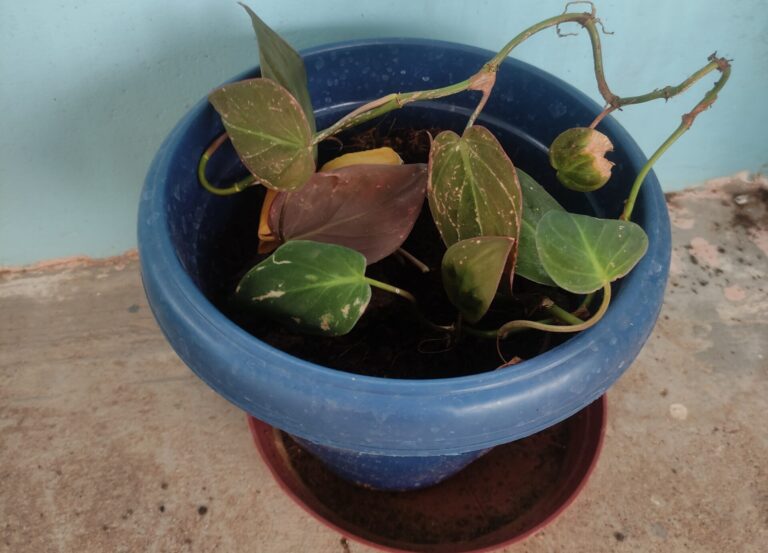
If you think buying expensive potting mix, fancy tools, and costly fertilisers automatically makes you an expert gardener, nope, nada, no! Thriving foliage plants don’t need a fortune; they need basic care done right.
The truth is: once you understand the basics of foliage plant care, you’ll make fewer mistakes, save money, and enjoy a lush green corner. Here are my simple beginner-friendly foliage plant tips that truly work.
1. Test the Soil Before You Water
Most foliage plants die from overwatering, not underwatering. Unlike flowering or edible plants, container-grown foliage plants like their soil moist but not soggy.
- Use a well-draining potting mix with good aeration.
- Make sure every pot has a proper drainage hole.
- Before watering, do the finger test:
- If the topsoil sticks to your finger, it’s still moist—don’t water.
- If it feels dry, water until it drains from the holes.
“Confused about cocopeat, compost, and perlite? Learn how these 3 simple ingredients can transform your potting mix for healthy container plants. Read here!“
Never follow a strict watering schedule. Water only when the plant is thirsty.
2. Always Check New Plants for Pests
Excited after buying a new plant? Hold on! That nursery plant may be carrying pests or fungal infections that could spread to your healthy plants.
What I do for every new plant:
- Inspect the sapling in daylight before buying. Avoid late evening plant shopping.
- If you spot pests:
- Remove dead or affected leaves.
- Wash the roots by soaking them in 3% hydrogen peroxide (1:10 dilution).
- Spray with DIY neem oil pesticide (1 tsp neem oil + 1 tsp liquid soap + 1L water).
- Repot the plant into a clean nursery pot with fresh, sterilized potting mix.
- Quarantine the plant for 2 weeks before adding it to your garden.
“Pests ruining your container plants? Try these natural, chemical-free pest control tips I use in my own garden to protect plants the safe way. Read here!“
No shortcuts here—this simple step has saved me from countless infestations.
3. Don’t Chase Trends—Understand Your Space
Pinterest-perfect gardens and fancy Instagram setups look amazing, but real-life gardening is different.
Before you buy a plant, ask yourself:
- Space: How much space do I have? How many pots can I fit?
- Light: What kind of sunlight does this spot get throughout the year?
- Climate: Is my weather hot, humid, dry, or mixed? Which plants naturally thrive here?
- Plant Type: Do I want foliage plants, edible plants, or flowers? What excites me to care for daily?
- Time: How much time can I give to watering, pruning, and plant care?
- Budget: Do I want to spend on fancy décor now, or start simple and learn first?
Gardening trends can be misleading because what works in one climate may fail in another. Starting with easy-care foliage plants in affordable pots is the safest and most satisfying way to build confidence.
You don’t need fancy tools, costly soils, or expensive fertilizers to have thriving foliage plants. What you need is knowledge, patience, and a few good habits—like checking soil before watering, quarantining new plants, and choosing plants suited to your space and lifestyle.
❌ What I No Longer Do (Even If Pinterest Says So)
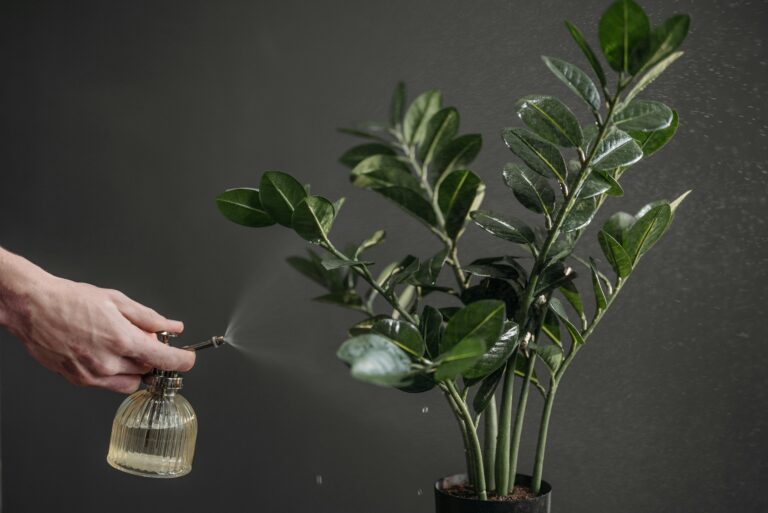
Over the years, trial and error in container gardening taught me one important truth: not everything that looks good on Pinterest works for real plants. Some trends can do more harm than good. Here’s what I no longer do (and why).
Daily Misting for Humidity (and Why It Failed)
I used to think misting foliage plants every day was a “must” for tropical plants. Big mistake.
Daily misting creates the same problems as overwatering: fungal diseases, leaf spots, and mushy stems.
Now, I only mist when the plant actually needs it, and I focus on balanced watering and airflow instead. Plants need care based on their nature, not on what social media trends suggest.
Blindly Following Trending “Plant Hacks”
Most viral plant hacks are exciting for a few days and then forgotten. But they often cause long-term problems.
Instead of chasing trends, I stick to the basics of functional gardening:
- Proper watering
- Light placement
- Good soil mix
- Correct pruning and fertilizing
- Pots with drainage
- Pest and disease control
These core principles are what keep container plants thriving, not shortcuts.
Over-Fertilising in Hopes of Fast Growth
This one deserves bold letters:
There is no such thing as overnight growth.
Those before-and-after reels with magical growth are misleading. Plants need consistent care from day one, not just a heavy dose of fertilizer.
In fact, over-fertilizing—even with organic fertilizers—causes:
- Fertilizer burn
- Salt buildup in the soil
- Stunted growth
- Weak roots
- Pest attraction
I’ve learned to feed my foliage plants slowly and steadily with light liquid fertilizers or slow-release organic nutrients.
“Not all liquid fertilizers are magic, but the right ones work wonders! Learn how I feed container plants with simple liquid fertilizer tips. Read here!“
Using Glazed Pots Without Drainage
No matter how aesthetic it looks, a pot without drainage holes is a plant’s worst enemy.
Without proper drainage, water gets trapped in the soil, leading to:
- Root rot
- Fungal growth
- Mushy, wilted plants
Now, I only use pots with drainage holes. If I want a fancy glazed pot, I use the double-pot method: keep a smaller draining pot inside the decorative outer pot.
Grouping All Foliage Under One Care Rule
Not all foliage plants are created equal.
Different families like Philodendrons, Syngoniums, Cordylines, and succulents have different needs for light, soil mix, and watering.
I no longer follow generic “one-size-fits-all” advice. Instead, I study each plant and adjust care based on its natural growth pattern.
These lessons came from years of mistakes, wilted plants, and trial-and-error learning. Today, my container garden thrives because I ignore viral gardening trends and focus on plant-specific care.
👉 Read my full blog on the biggest tool regrets after 7 years of container gardening to avoid the same mistakes and find smarter, budget-friendly fixes.
💬 Final Thoughts – You’ll Learn As You Grow
If you’re just starting out with foliage plants in containers, here’s something I want you to remember: it’s perfectly okay to fail at first. Every wilted leaf and mushy stem teaches you something valuable.
Gardening is a journey, not a race. With a little patience, observation, and trial and error, you’ll discover what works best for your plants, your space, and your lifestyle.
Have your own foliage plant story—success or failure? I’d love to hear it in the comments! Sharing real experiences helps other beginner gardeners learn, too.
Before you go, you might also enjoy:
- My Easy Soil Mix Recipe for Potted Plants
- Beginner’s Guide to Liquid Fertilizers That Actually Work
- Choosing the Right Pot Size for Healthy Roots
Remember: you’ll grow as your garden grows.





Pingback: Choosing the Right Containers: Real Tips from 7 Years of Container Gardening